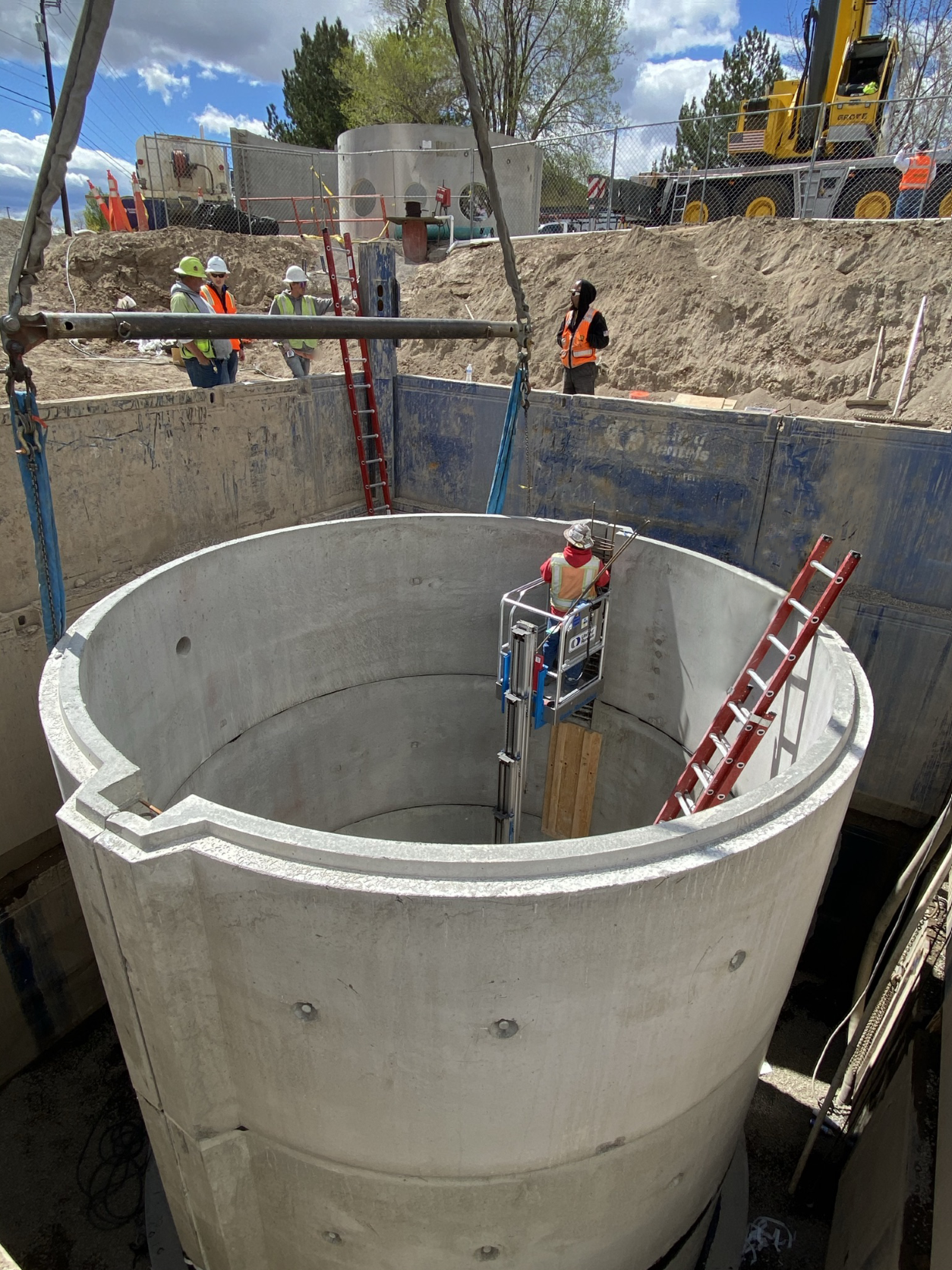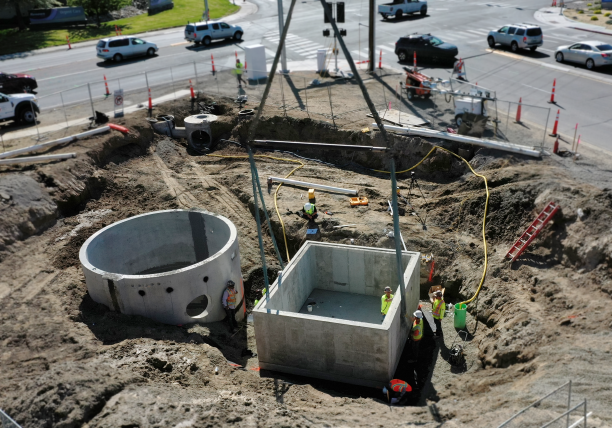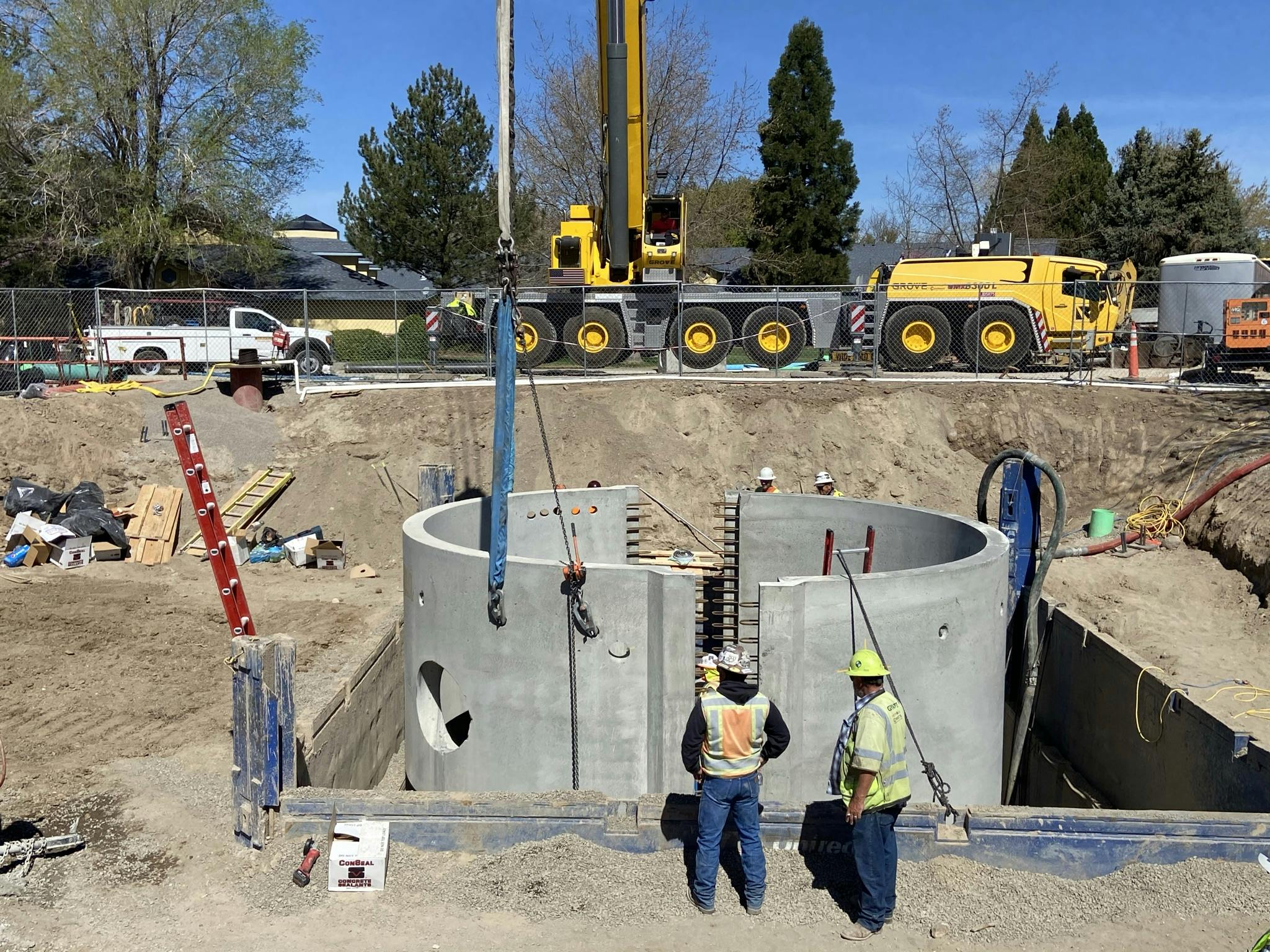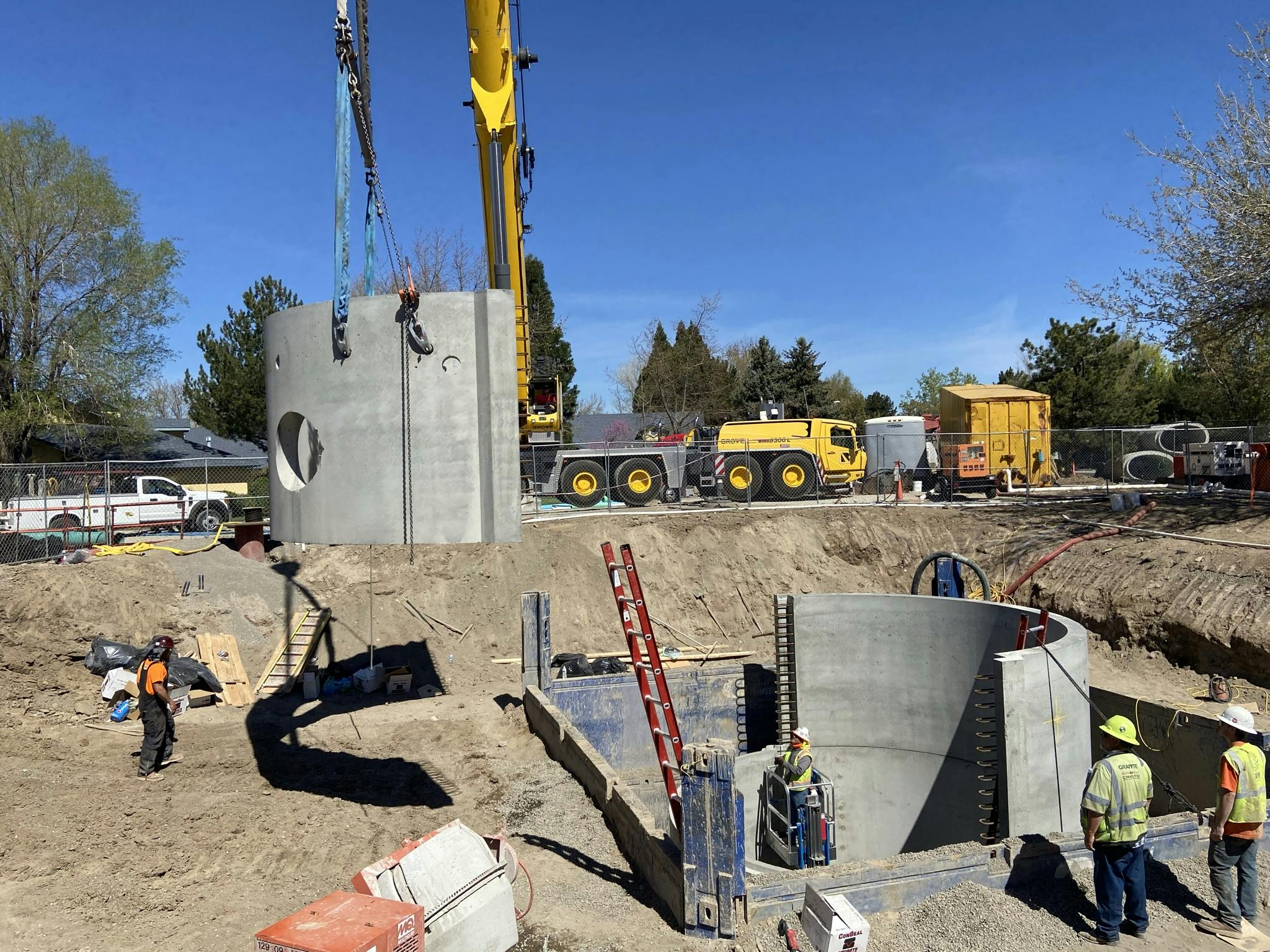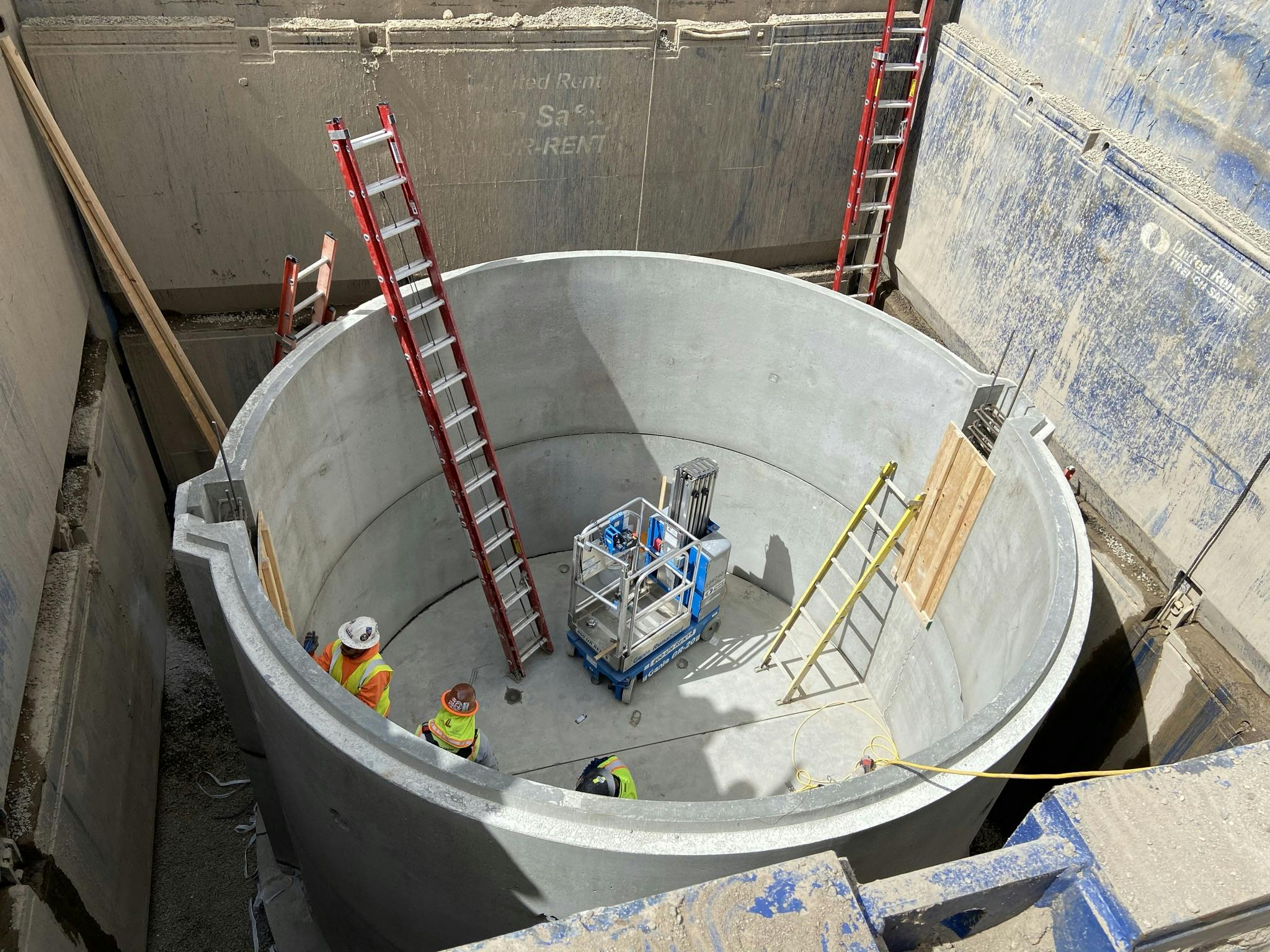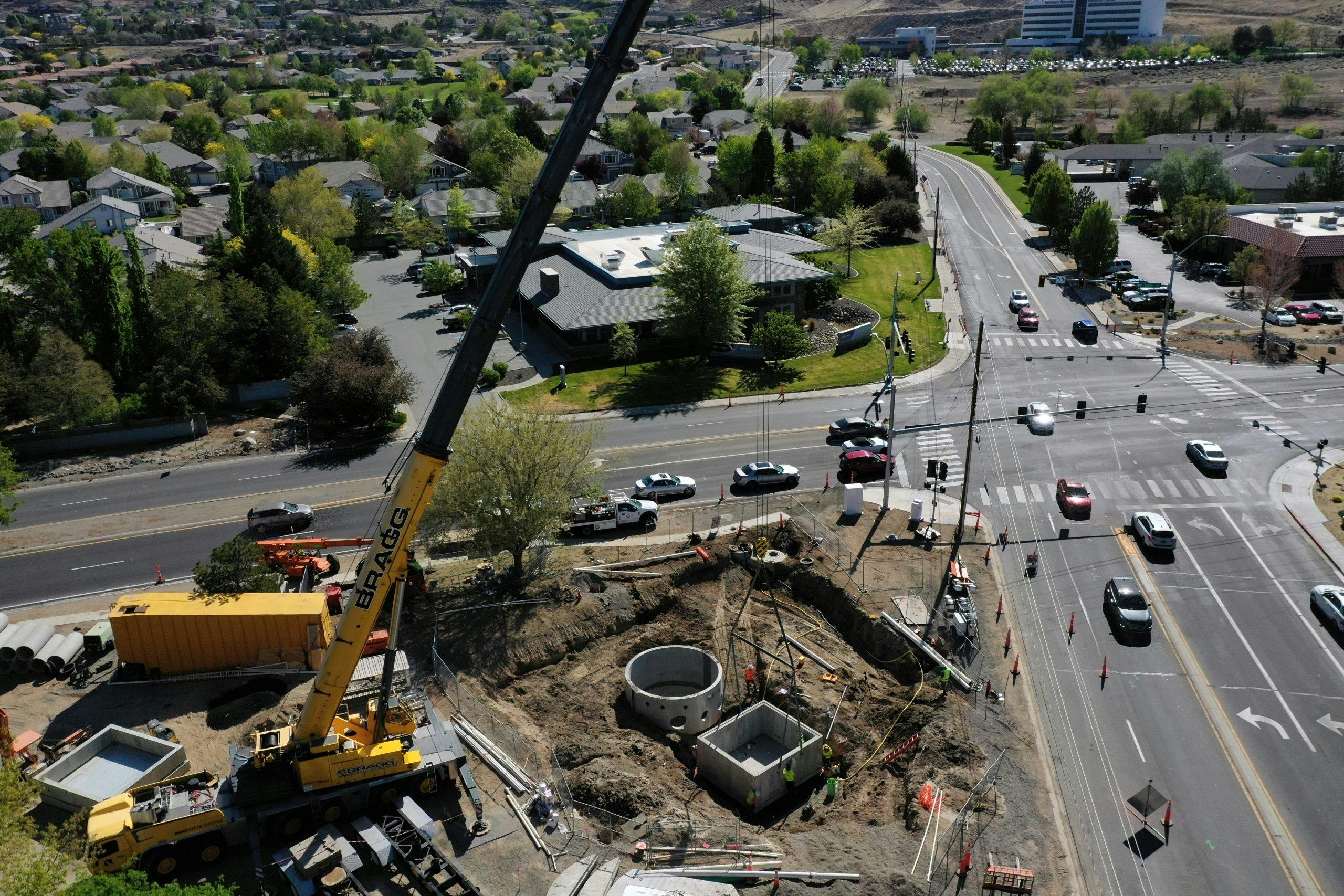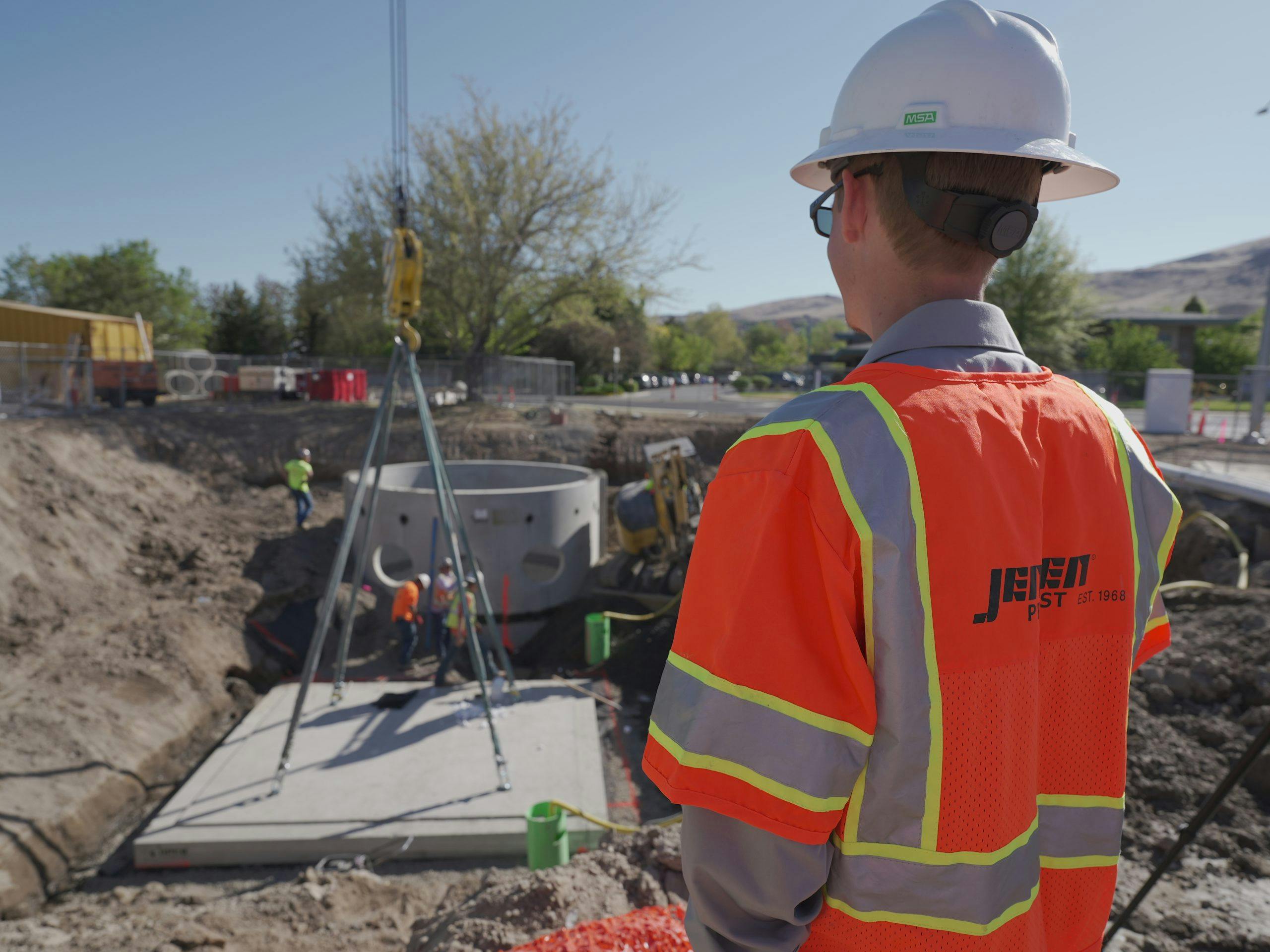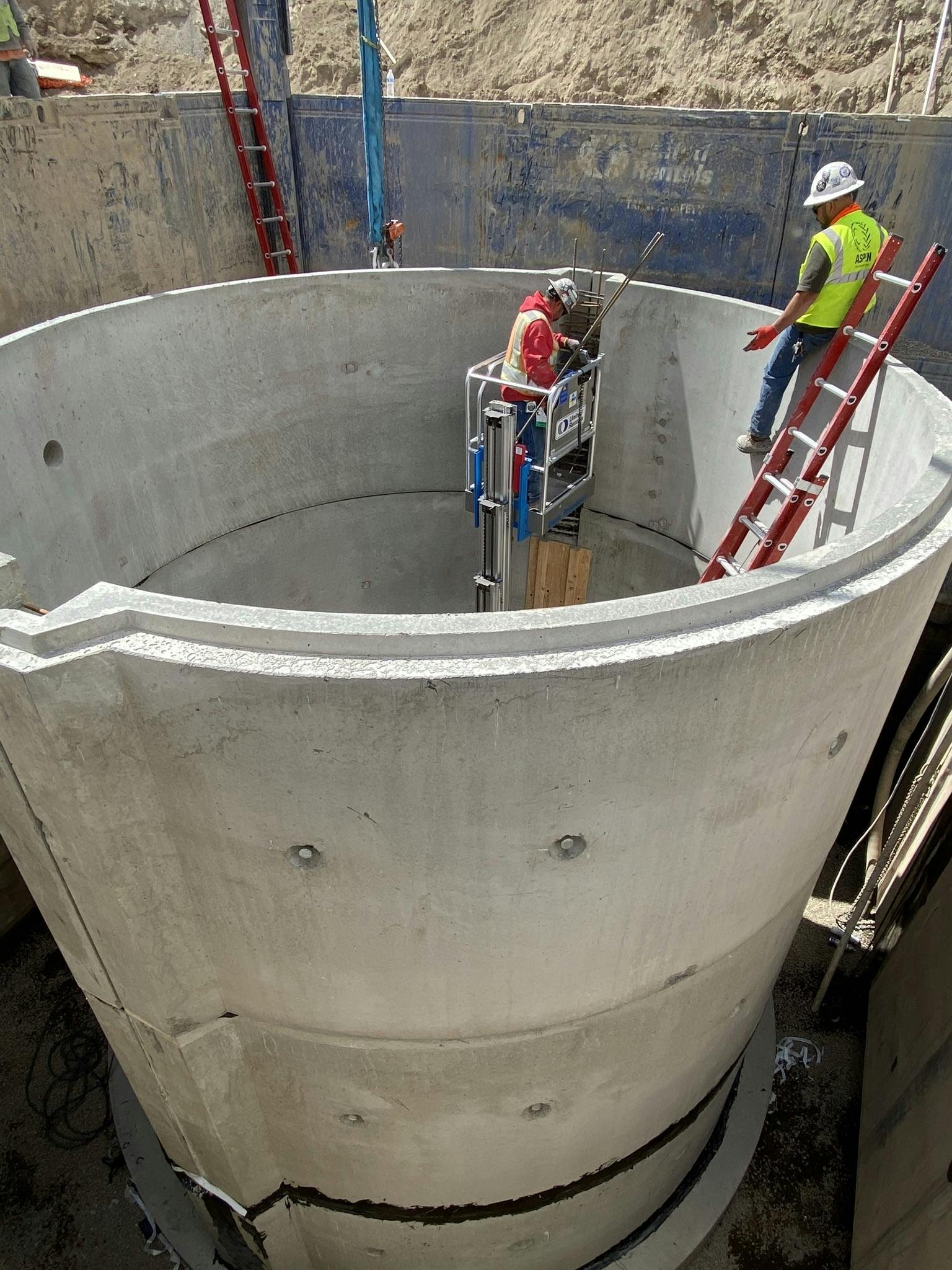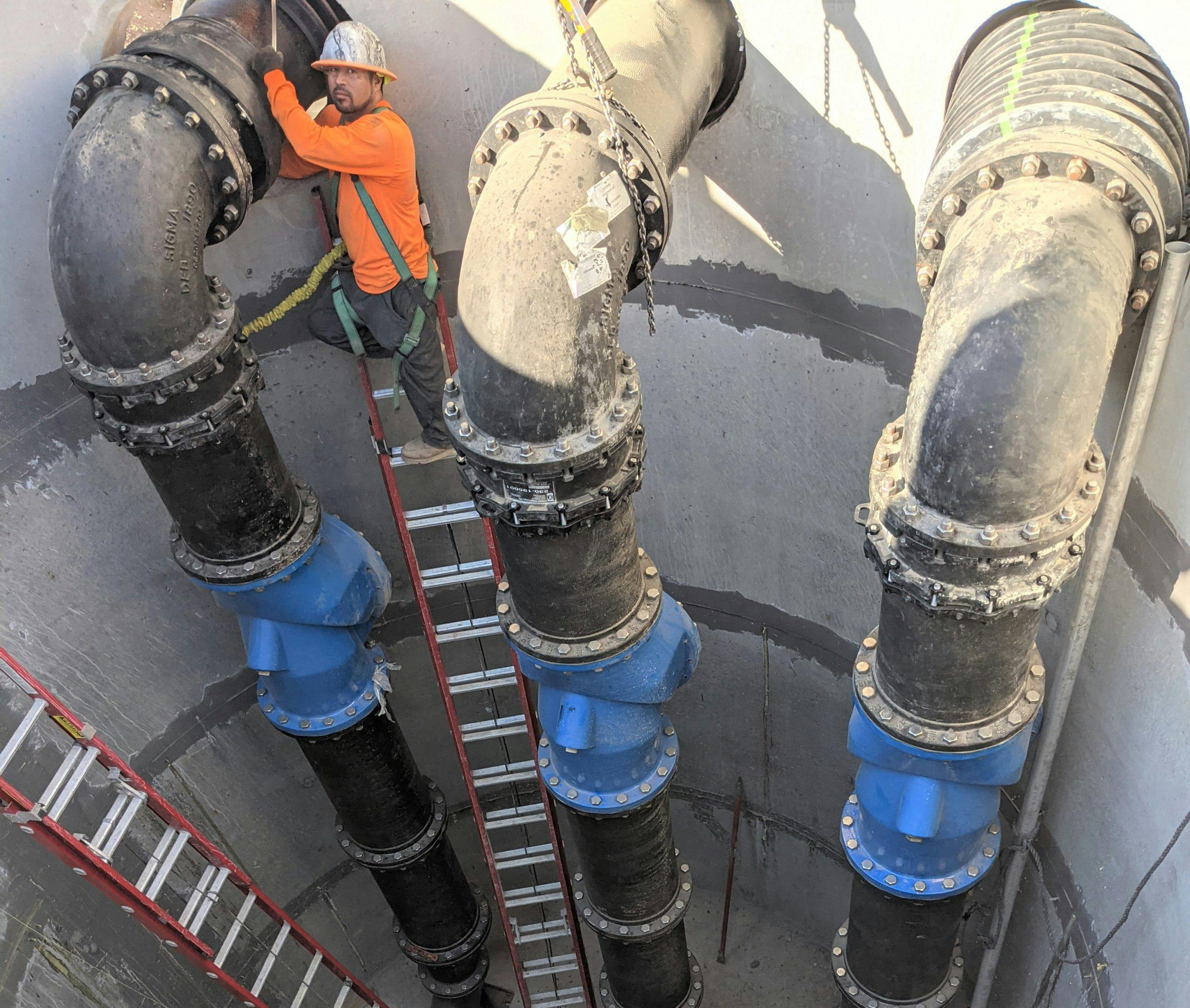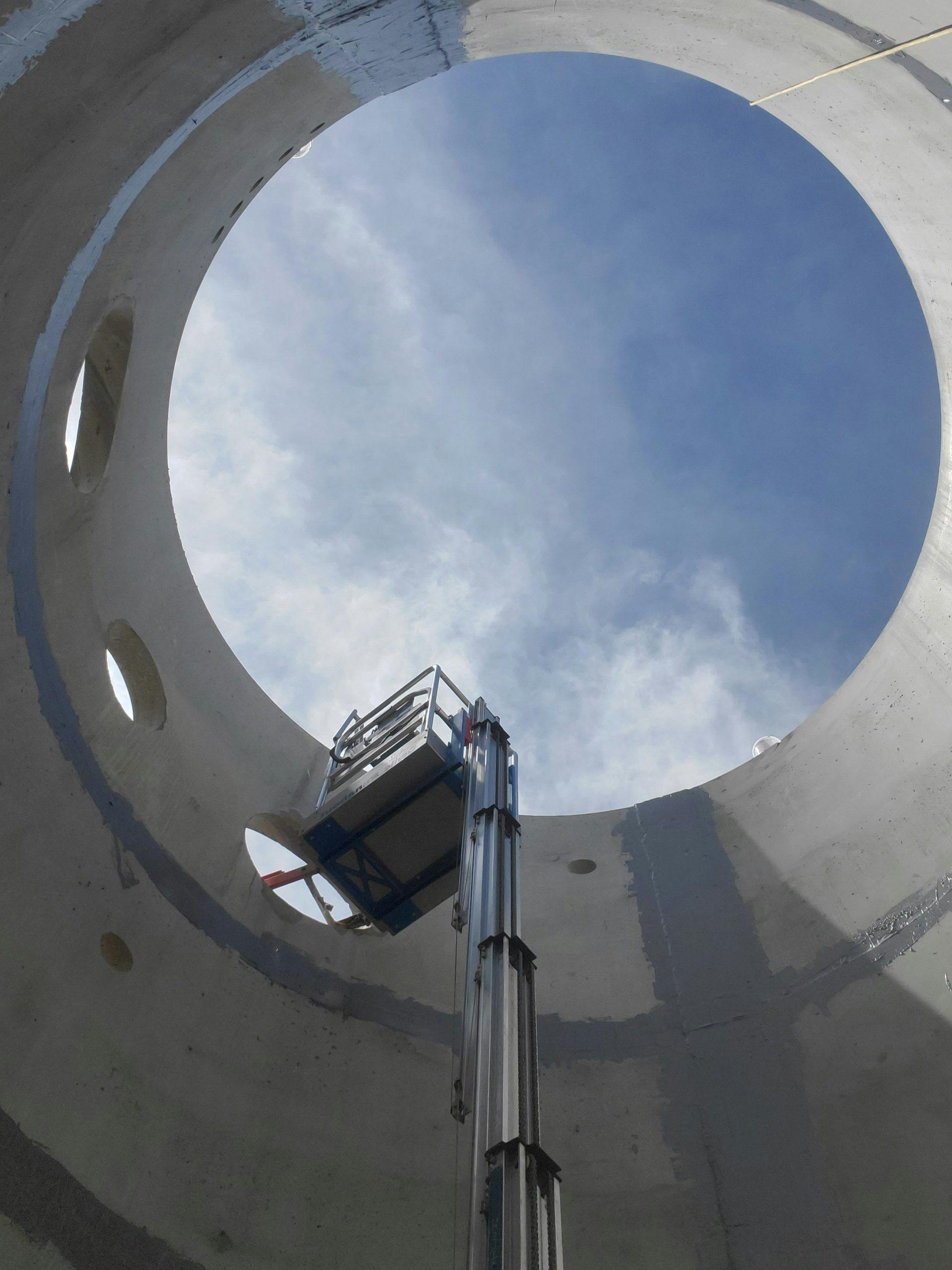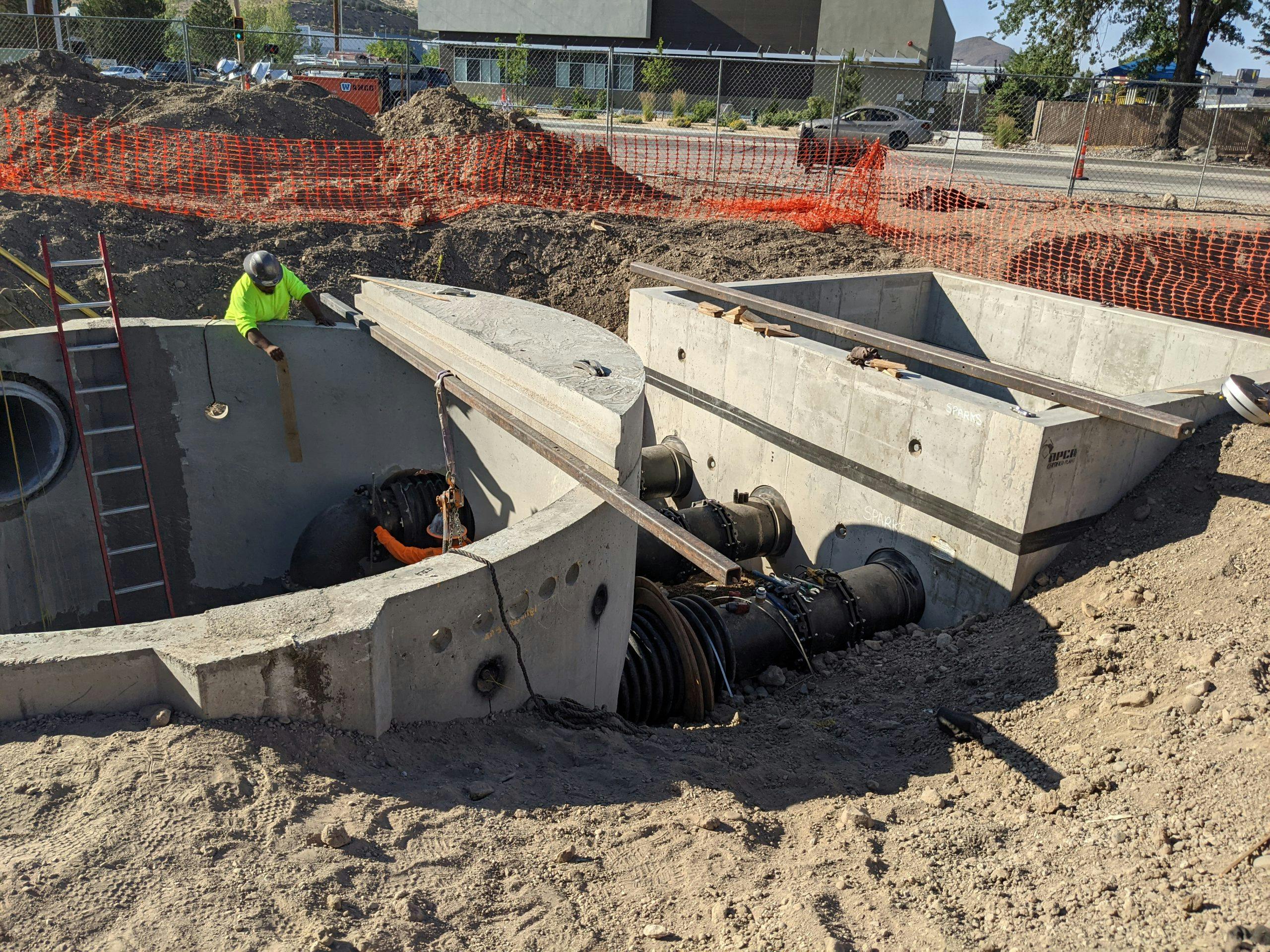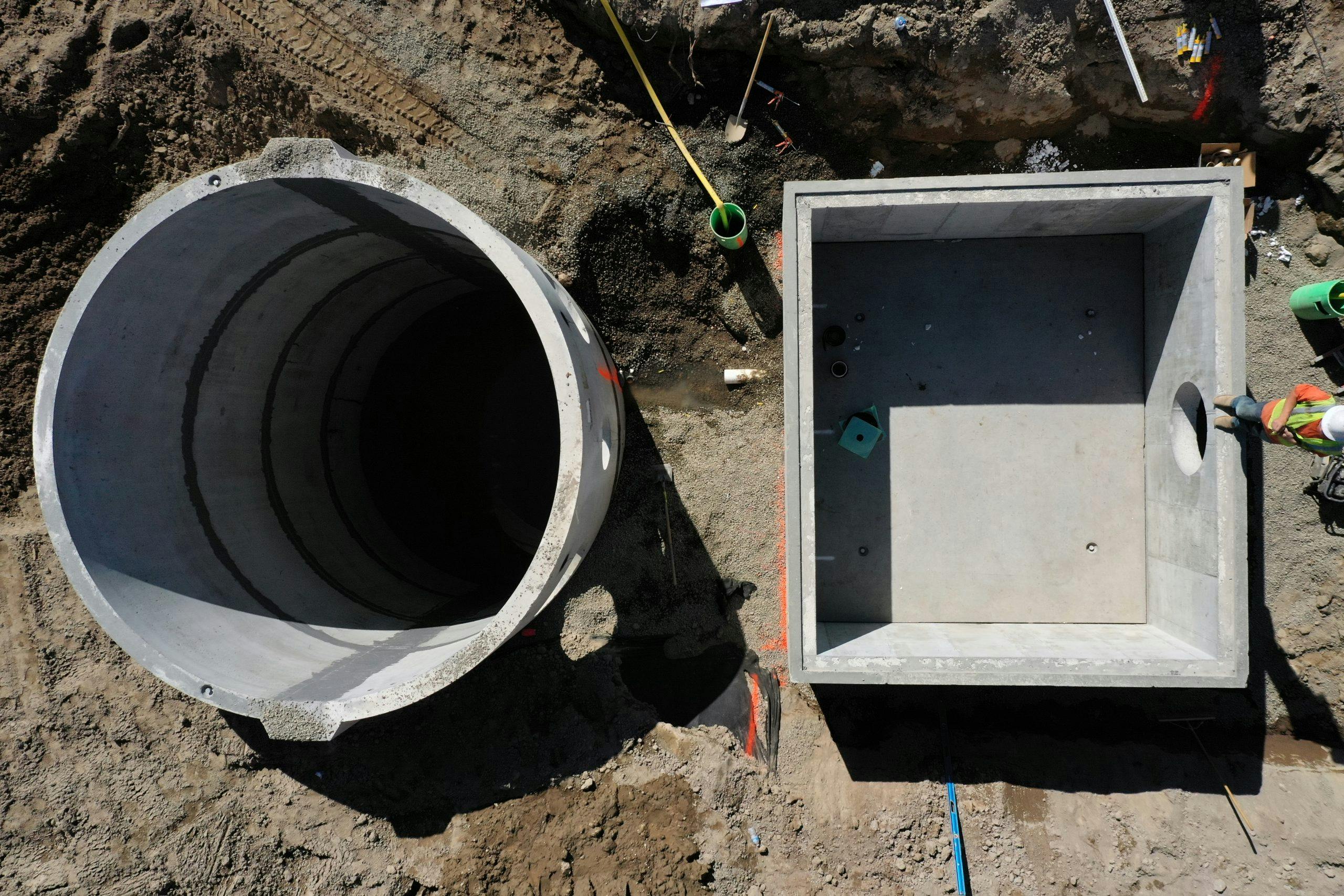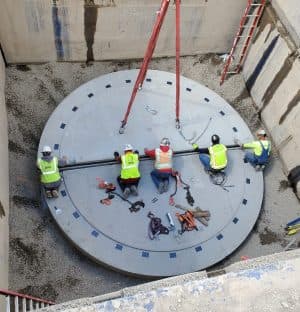Pump Station Fixes Flooded Intersection
Sparks, Nevada
When a storm event sweeps in across the Pah Rah Mountain Range in Northwestern Nevada, rain washes down from the 8,247’ summit and finds its way to the intersection of Prater Way and Vista Boulevard in the City of Sparks. The area soon floods and causes undo traffic problems for the community and its residents.
Twenty-five years ago the problems were more severe. On New Year’s Day 1997 a massive rainfall swept through Northern Nevada and Northern California causing $700 million worth of damage. The Truckee River took out schools, businesses, and anything in its way as it surged across the two states. The City of Sparks responded with a plan to change its storm drainage infrastructure in anticipation of the next big event. In 2008 the North Truckee Drain Realignment Project kicked off a new era of awareness about how to handle the extreme ends of the elements.
In 2012 Sparks commissioned a storm drain master plan from Atkins North America, a design, engineering, and project management consultancy. The firm recommended a strategic capital improvement approach to align with the city’s budget with necessary infrastructure needs.
“We identified a whole bunch of problem areas around the city that they would need to address over the years,” says Brian Janes, Senior Project Director for Atkins. “Prater Way and Vista Boulevard was one of them. It gets a lot of offsite flow from the mountains when the storm hit, and the intersection is pretty flat. The rain just sits there and floods the area.”
The traffic problems are compounded by the location of the intersection. As a conduit to nearby medical services, senior citizen centers, and other critical facilities, the Prater and Vista junction needs traffic to flow without interruption—without all the water. Fixing the flooding finally made its way through the master plan in 2017.
Packaged vs Custom Pump Station
Based on the consultant work, Sparks asked Atkins to take on the project. Initially the design firm considered just installing a bigger gravity storm drain under the intersection but then scrapped that idea when the modeling showed a performance shortfall.
“We switched gears and incorporated a pump station and force main,” Janes says. “We went in that direction to alleviate some of the smaller storm flooding and to definitely help during the larger storms to drain the intersection faster.
“As part of the scoping effort, we had to evaluate whether to go with a packaged pump station or doing a full custom design. After talking with Jensen Water Resources we thought they had some really good packaged stuff that would help. So we went in that direction.”
Packaged products typically cost less, so that’s a consideration, but there are other advantages over custom work. First, the contactor does not have to oversee a custom design. That part of the job is just done. Second, if a part needs replaced a packaged product is easier to maintain versus trying to reconfigure a custom setting and finding out a certain part is no longer available. Third, packaged solutions typically have been tested time and again in the field. A consistent outcome is generally more favorable to contractors having to oversee a lot of moving project parts.
Wet Well Storage vs Pumped Out
In 2018, Jensen Water Resources, also located in Sparks, was contacted by Atkins to provide a preliminary pump station design based on hydraulic modeling by Atkins. The hydraulic modeling takes a storm event and determines how fast rainfall is coming down, how much of it can be stored in the station’s wet well versus being pumped out, and how the whole system can keep the intersection dry.
Christopher Purdie, Jensen Water Resources Pump Station Product Manager, coordinated with Atkins on multiple design iterations for a packaged pump station solution that the contractor, Aspen Developers Corporation, could efficiently install.
“The overall size of the pump station is largely dictated by the discharge flowrate,” Purdie says. “Once we are provided the discharge goal for a system, we can determine how large the piping needs to be and how large the pumps need to be. We also needed to determine the structure size to ensure we’re cycling the three pumps within the manufacturer’s specifications. All these factors combined are how we decided on a 16’ diameter precast concrete wet well.
“The pump station is designed to discharge more than 15,000 gpm with all three 170 horsepower pumps running. That gives you an idea of just how much water that intersection can see.”
Soon after the installation was completed in 2021, another storm event visited the Pah Rah Mountain Range as if to test the new setup. It was the moment of truth for Atkins, Aspen, Jensen, and Sparks.
“We had a lot of rainfall over the day,” Janes says. “The new pump station just cycled on and off, and got the rain out of there like it was supposed to do. The City of Sparks was happy with it and said it worked great.”
Purdie wanted to actually see the station operate during the new storm event. “I actually drove over to Prater Way and Vista Boulevard when we were having really heavy rains,” he says. “The pump station worked exactly as we expected and the community was able to use the intersection without any issues. It’s great when a project like this works out so well.”
Jensen Water Resources provides pump stations for projects ranging from small municipal setups to large stormwater configurations. Request a quote for your project.
